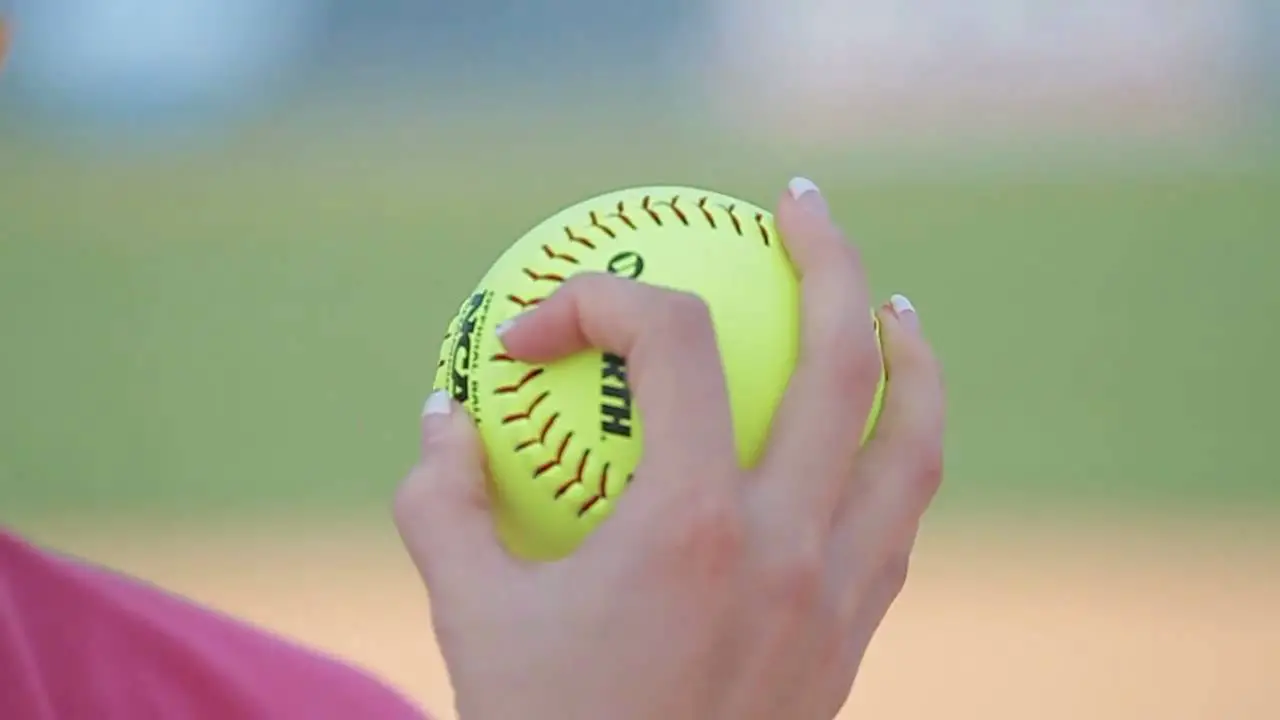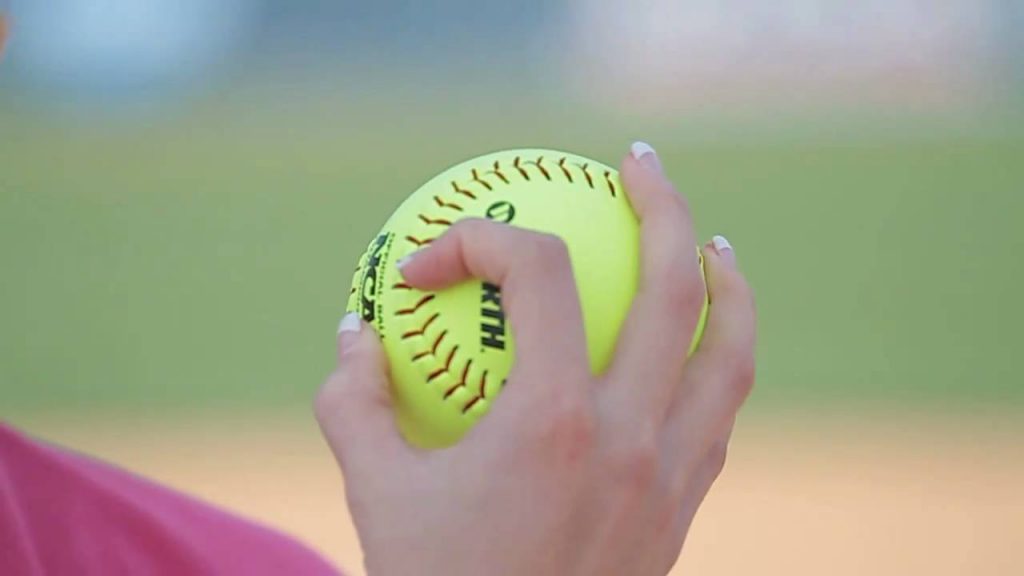When you want to impress your teammates in softball, learning how to throw a curveball as a pitcher is one guaranteed way to do that.
No matter what level you play softball at, throwing a curveball will help your team since it is a lot harder for the batter to hit and they are more likely to go out thanks to a curveball.
What is a curveball in softball?
First, it makes sense to describe what a curveball is in softball. This will help you to understand all of the mechanics that we describe for the set up.
A curveball is a type of pitch thrown by the pitcher that will have some spin thanks to the way that the ball is held when it is released.
A curveball in both slow pitch and fastpitch softball tends to be harder for the batter to hit, this is ideal for a team that wants to get the batting team out faster in order to win.

Is there a certain grip that I need to have on the ball?
Yes, there is a specific grip that you need to become familiar with for the curveball in softball.
There are also two different types of softball, slow pitch and fastpitch, so we will detail the differences in curveballs between the two softball types too.
Grip on the ball
- Slow pitch: place your index ad middle fingers parallel to two seams and then place your thumb and other fingers anywhere else on the ball. The fingers that are on the seams should be running along the seams for the perfect curveball grip.
- Fastpitch: place your fingers in the same way that you did for the grip in slow pitch but put your thumb on the opposite side of the ball and curl up your other fingers into your palm and not have your fingertips touching the ball with those fingers.
There are some slight changes in the grips that are required for both slow pitch and fastpitch softball. This is mainly due to the way that you are allowed to pitch the ball in each of the types of softball.
It is advised for both to arrange your hand into your desired grip when the ball is in your glove. This way the opposing team and the batter will be less likely to see the type of pitch you are about to throw and will certainly not expect a curveball.
Releasing the ball
When you have perfected the grip, you can then move onto the way that you throw the ball and all of the mechanics that go along with that:
- Slow pitch: when you are throwing the ball in slow pitch softball, your fingers need to be on the seam that is facing the ground, so that your palm is facing up to the sky. When you release the ball, you can spin your hand quite quickly. You should spin the ball counterclockwise of you are right-handed and clockwise if you are left-handed. If done correctly, this will cause the ball to spin be the time it gets to the batter, and with any luck, they might not realize it is a curveball until it approaches them.
- Fastpitch: since you throw overarm in fastpitch softball, the way that you throw the ball and release it is different to in slow pitch softball. When you throw the ball, you will want to release it with a spin, to do this you can place emphasis on the pressure from the index and middle fingers on the seams of the ball as it leaves your hand. The same rules apply in that you should spin counterclockwise if you are right-handed and clockwise if you are left-handed.
Why is throwing a curveball in softball a good idea?
The reason that a lot of players will opt to throw a curveball is because it is almost always hard to detect. If you are arranging the way that your grip the ball in the secrecy of your glove, then the batting player is less likely to see that you are about to throw a curveball.
Because of this, a curveball can mean that there is more likely to be a strikeout called. If you work well as a pitcher with your catcher, then you are going to have a seamless set-up in which they can continuously catch your curveballs and result in a strike.
Conclusion
There are two types of softball: slow pitch and fastpitch. Because of this, there are two types of curveball that are possible in softball. The type of softball that you play will be the deciding factor in how you throw a curveball.
If you are playing slow pitch softball, then the grip of your hand on the ball will have to be palm up to the sky as you throw, and if you are playing fastpitch softball, then your palm will be further angled towards the ground as you throw.
Both types of softball require you to put a spin on the ball as it is released from your hand if you want to execute a perfect curveball that lands within the hit-zone. This spin will be counterclockwise or clockwise depending on if you are right-handed or left-handed, respectively.

